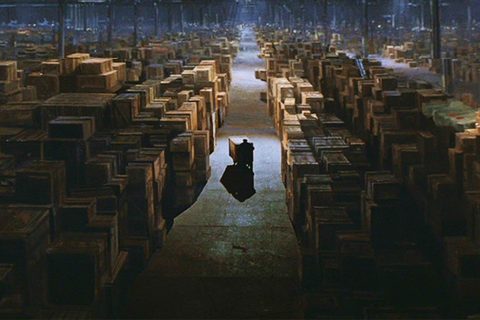Amazon can seem as the pinnacle of organization and optimization. Robots moves shelves so workers can get to them faster. Their PrimeAir planes have curved pallets so that they can better fit the shape of the cargo hold. And through all of this are elaborate tracking systems and data management.
It might seem like their return system, which is quite streamlined from a customer perspective, is just as thorough and precise as their warehouse and outbound shipment management. A recent article in The Atlantic paints a different picture, at least for some portion of Amazon returns, by showcasing the strange world of return liquidation. In something that is straight out of Storage Wars, bargain savvy customers can buy pallets and cases of returned merchandise, often with little knowledge of whats inside, for a fraction of the retail cost. You can get a taste of this on liquidation.com, a site that can consume an afternoon of deal hunting or sheer curiosity.
Every box is a core sample drilled through the digital crust of platform capitalism. On Amazon’s website, sophisticated sorting algorithms relentlessly rank and organize these products before they go out into the world, but once the goods return to the warehouse, they shake free of the database and become random objects thrown together into a box by fate. Most likely, never will this precise box of [stuff] ever exist again in the world. On liquidation.com, each pallet’s manifest comes with suggested prices for each product in a pristine state. If you add them up, the “value” of the box might be $4,000, while the auction price might only come to $200.
While Amazon doesn’t publicly talk about how it chooses which returned products go back up for sale and which go to the liquidators, it does sell some products through Amazon Warehouse at a discount. If it sounds crazy to sell products at massive discounts, consider that goods sitting in a warehouse are a cost. So is the labor necessary to repackage something for resale. If Amazon and other retailers let another company pay them something, they avoid those costs and add some revenue.
It may seem striking that a company that is obsessed with margins — one that works to shave fractions of cents off of operational costs — is willing to eat so much on a return. It may even seem like a huge oversight. But much more likely is that this whole setup is a result of these austere considerations, not in spite of them. It pays more for Amazon to send some of its returns into the abyss for 5 cents on the dollar than to store it, restock it, and try to resell it.
For companies that have a few warehouses and shipping locations, this seems like the wrong call, but the lesson, from Amazon at least, is that when you’re big enough and the operation is complicated enough, it pays to just get rid of the headache entirely.
Read the whole article over at The Atlantic.

No comments:
Post a Comment